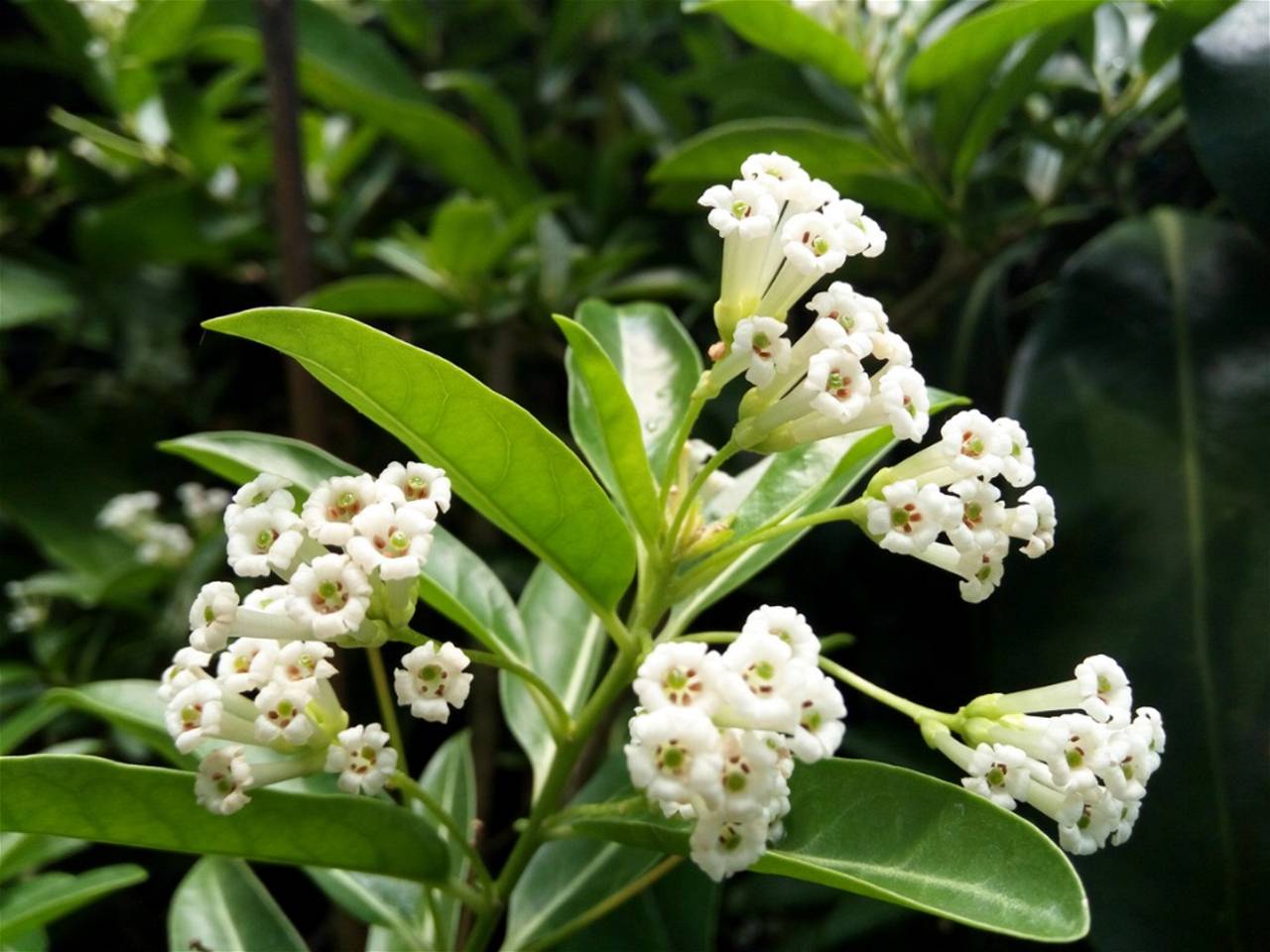
Some believe that night blooming jasmine or Raat ki Raani (Queen of the Night), which has a sweet, strong scent that emanates at night when its flowers bloom, attracts snakes who come crawling out of their holes to smell the fragrance.
To mask the smell of the night blooming jasmine and avoid the snakes coming out, people plant day blooming jasmine or Din ka Raja (King of the Day), thinking it will be effective. However, it is not.
In truth, it’s not the fragrance snakes are attracted to but actually the insects that are attracted to the overwhelming smell of the flowers. The snakes just come out of their homes looking to make a meal out of the insects.
Now, day blooming jasmine has its own qualities, of course. The plant has highly fragrant flowers that close up at sundown folding their scent within. Although it looks and smells like jasmine, day blooming jasmine is not a true jasmine.
Instead, it belongs to the genus and species Cestrum diurnum, a jessamine variation. Jessamines, along with potatoes, tomatoes, and peppers, are members of the Solanaceae plant family.
The beautiful little tubular flowering plants are easy to grow and require little care, just like their nighttime counterparts.
Here’s a guide on how to grow and care for day blooming jasmine:
Day blooming jasmine love the sunlight so keep them in an area with full-partial sunlight and in moist soil. Soil pH or quality is not much of an issue with these plants, that’s why they can be usually found growing in vacant pastures, roadsides, and in the wild.
In fact, they grow so fast, that it’s often not even noticed until they grow out of control. Day blooming jasmine can be kept under control in gardens or containers with regular pruning after the bloom period.
Unknown Facts About Day Blooming Jasmine:
-
The plant has several names including, Chinese inkberry, white chocolate plant, and Din ka Raja (King of the day), and is mainly upon for its sweet and strong scented flowers that are said to smell like chocolate.
-
Day blooming jasmines produce dark purple-black berries that were previously used to make ink after the petals have faded.
-
Many pollinators are drawn to the garden by the scented flowers, and various birds also feed on the berries.
-
The seeds of day blooming jasmine have escaped cultivation because the berries are consumed and digested by birds and some small mammals.
-
Wherever they come into contact with healthy soil and sunlight, these seeds quickly sprout and take root.
-
Does jasmine bloom during the day?
The night-blooming jasmine (Cestrum nocturnum) gets its name from the fact that its tubular, white-yellow flowers only open at night and close during the day. It is a member of the Solanaceae plant family, usually referred to as the nightshade or potato family.
-
Is day blooming jasmine poisonous?
The berries are small, rounded, and dark purple. Despite having a pleasant scent, this plant is extremely toxic, and no part of it should be eaten.
-
Does jasmine smell during the day?
Day-blooming jasmine produces clusters of fragrant tubular white flowers from late spring to mid-summer. These flowers get smaller at dusk, hiding their scent.











